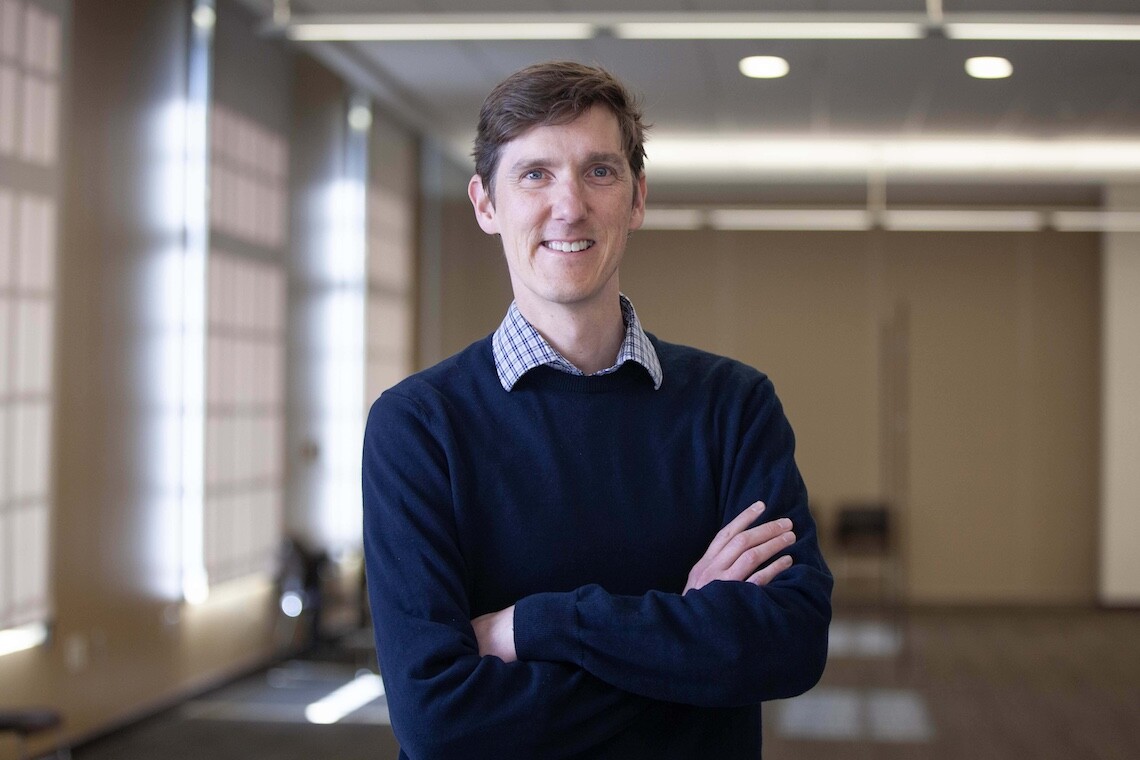Mobile Menu
- About Us
- Research
- Education
- Policy & Data
- News
- Resources
- Giving

Matt Orava is a family physician at Royal Victoria Regional Health Centre and a lecturer in family and community medicine at the University of Toronto. In 2023, he received the Tristan Lawson Distinguished Fellowship in Child Nutrition and Community Engagement to support a research project he led looking at childhood nutrition in Barrie.
The fellowship was one of five funded through the Joannah and Brian Lawson Centre for Child Nutrition at the Temerty Faculty of Medicine, and has provided Orava with dedicated research time to study quality of diet and access to nutritious food in diverse groups of children.
Orava spoke with writer Eileen Hoftyzer about the fellowship and his community-based work.
What research have you been able to pursue as the Tristan Lawson Distinguished Fellow in Child Nutrition and Community Engagement?
In previous research, I worked with a team to map out childhood obesity and diabetes patterns within our city and found areas of food deserts, which can be associated with lower socioeconomic status. We're now trying to implement a health promotion program across the city to address these problems, leveraging data to support investments and drive change.
We plan to launch a program called Live 5-2-1-0, modelled after a program created by the BC Children’s Hospital. It encourages children to have five servings of fruits and vegetables, no more than two hours of screen time, at least one hour of physical activity and zero to minimal sugary beverages daily. We have community partners, such as food banks and children’s recreation and sport programs, to help run this campaign across the city.
Physician education is a key part of the fellowship. How is this incorporated in your research?
While we were developing this program, we realized the population that had the highest need also had the lowest socioeconomic status. And it's hard for physicians to talk about eating five fruits and veggies a day if their patients can’t access that food. So, we have developed a social prescribing pathway for our clinic — it enables physicians, who know their patients are struggling, to work with a local social service provider to help navigate them, their patients and families to community resources.
There's a big gap in nutrition education among trainees in medical schools. As practising physicians, some of us have access to dietitians through our family health teams, but demand often outweighs the advice we can provide. So, we aim to give physicians the ability to talk about nutrition and how it’s connected to chronic diseases, as well as provide resources to help patients choose the best nutrition for themselves.
How did you become involved in this type of education and research?
This project is part of a larger initiative called Healthy Barrie, which began about ten years ago through work initiated by Adalsteinn Brown and Ross Upshur from U of T’s Dalla Lana School of Public Health, and Charles Gardner at the Simcoe Muskoka District Health Unit.
At the time, I was just finishing my family medicine residency at RVH and Stuart Murdoch, the project’s original academic lead, asked me to get involved. I’m now the primary care lead for Healthy Barrie.
What is Healthy Barrie’s goal?
Healthy Barrie brings community partners together to focus on interventions that could make our populations healthier, with a focus on health promotion.
One of the first projects was to create a community snapshot. Our family health team captures about 80 per cent of Barrie’s population, so we could use health outcome data from our team’s electronic medical records, and data from our community members related to health behaviours, service utilization and social determinants of health in different neighbourhoods.
We’ve used these snapshots for health promotion initiatives in high-need neighbourhoods, for example encouraging kids to walk to school or having physicians prescribe outdoor time in parks for children and adults with anxiety or depression, and now with Live 5-2-1-0.
Physicians and municipal leaders are very supportive of the project and keen to improve the health of children in Barrie.
What do you hope the long-term impact of Live 5-2-1-0 and Healthy Barrie will be?
First, we want people to become more aware of Live 5-2-1-0 and recognize the opportunities in our community for eating healthier and staying active.
Second, we want to help clinicians and other health-care professionals become more comfortable talking about nutrition and healthy living, to know about the resources and services available to patients — and to have pathways that help them refer patients to these services. In other words, we want elements and goals of these programs embedded in our family health team and the Barrie and Area Ontario Health Team.
Live 5-2-1-0 and Healthy Barrie are collaborations among the Barrie and Community Family Health Team, the Family Medicine Teaching Unit at the Royal Victoria Regional Health Centre, the Simcoe-Muskoka District Health Unit, the City of Barrie and U of T.


